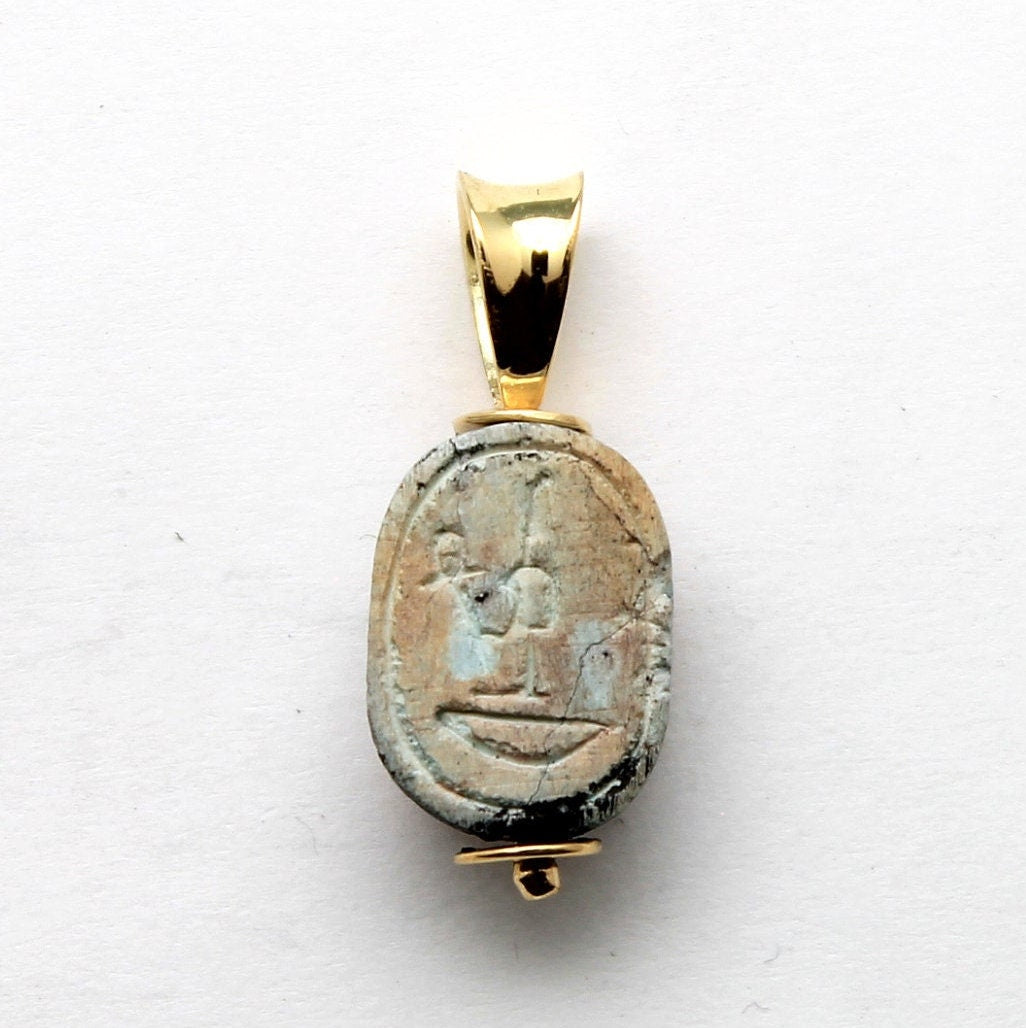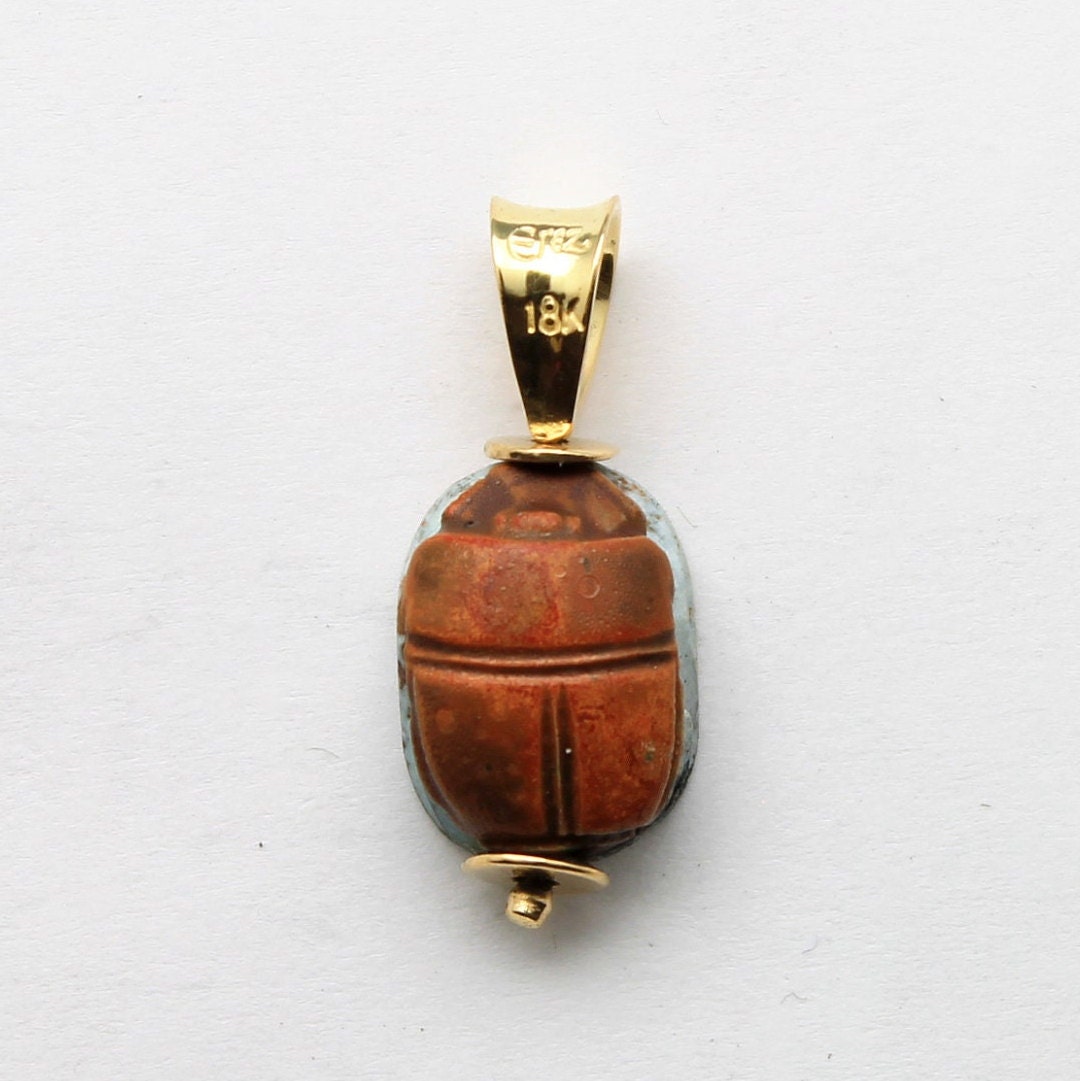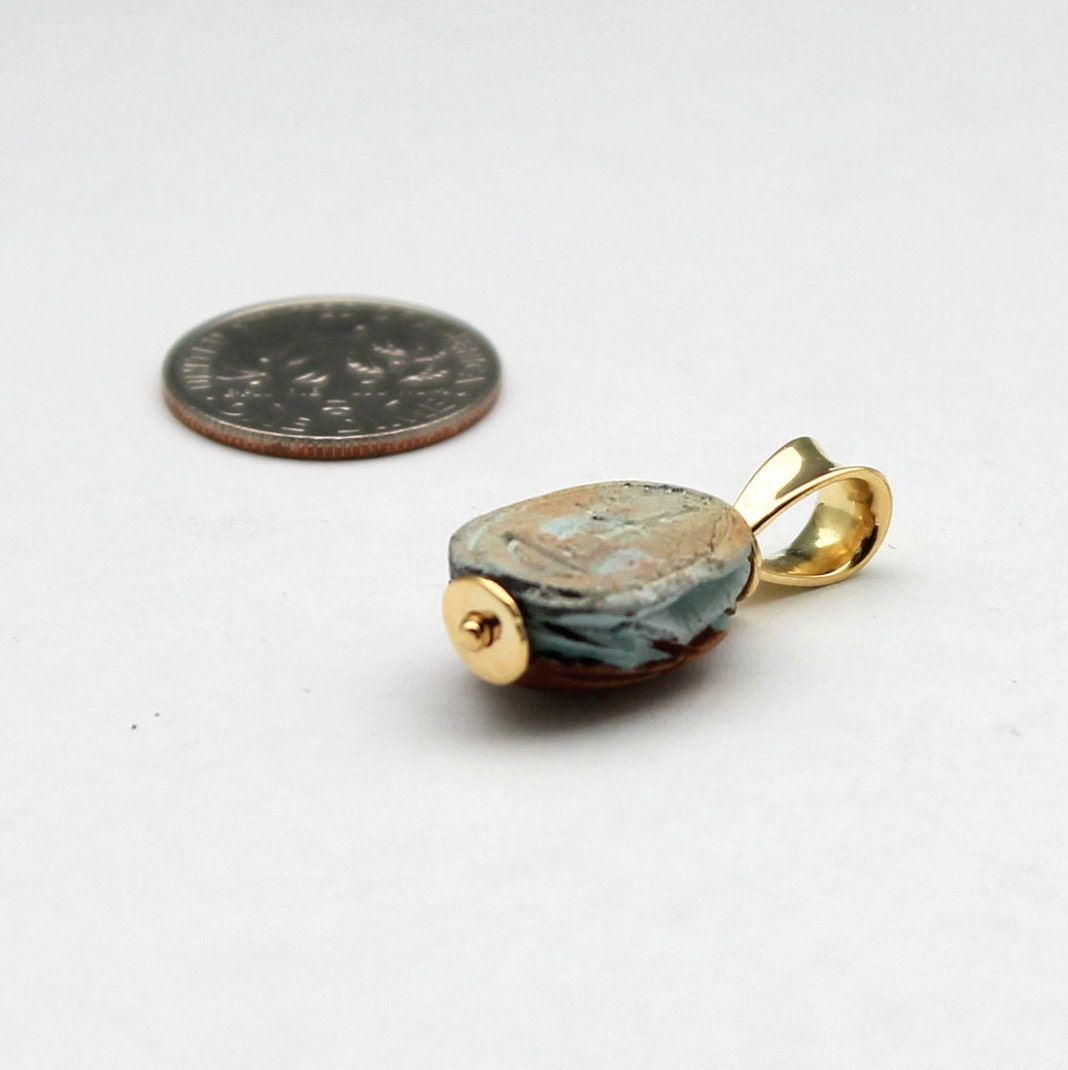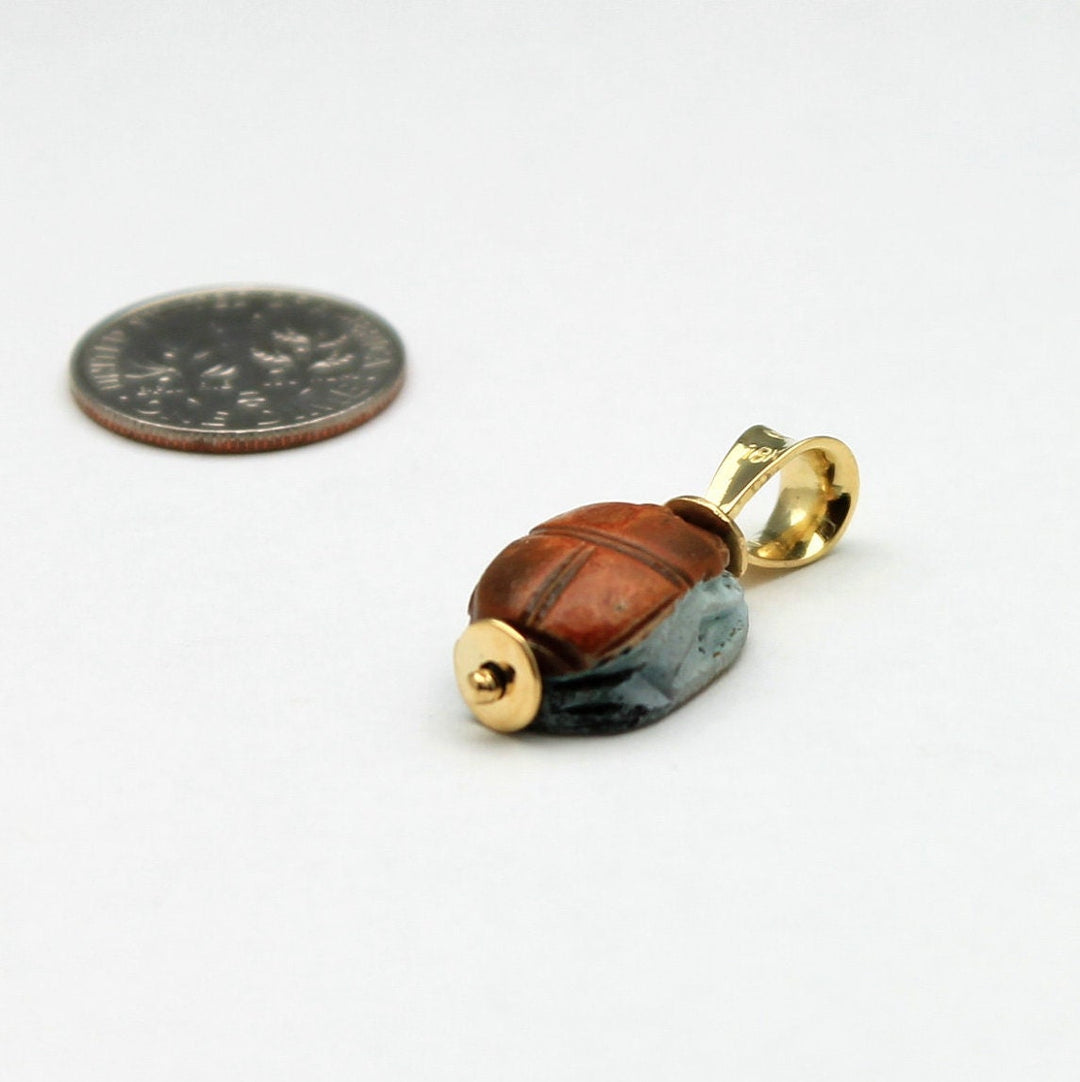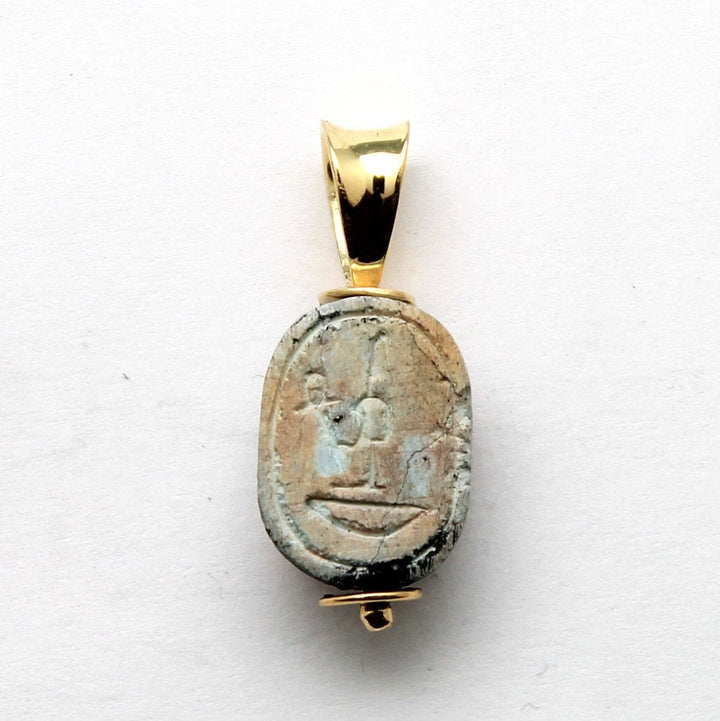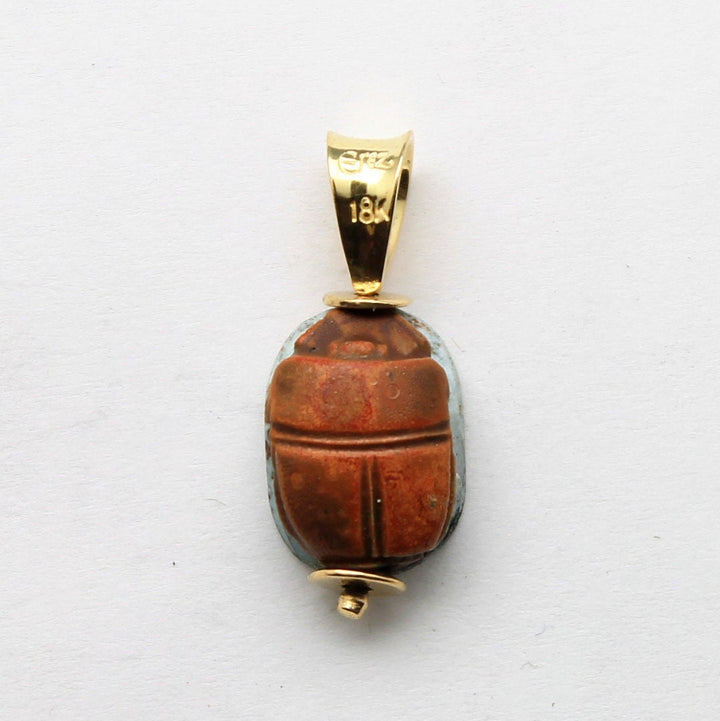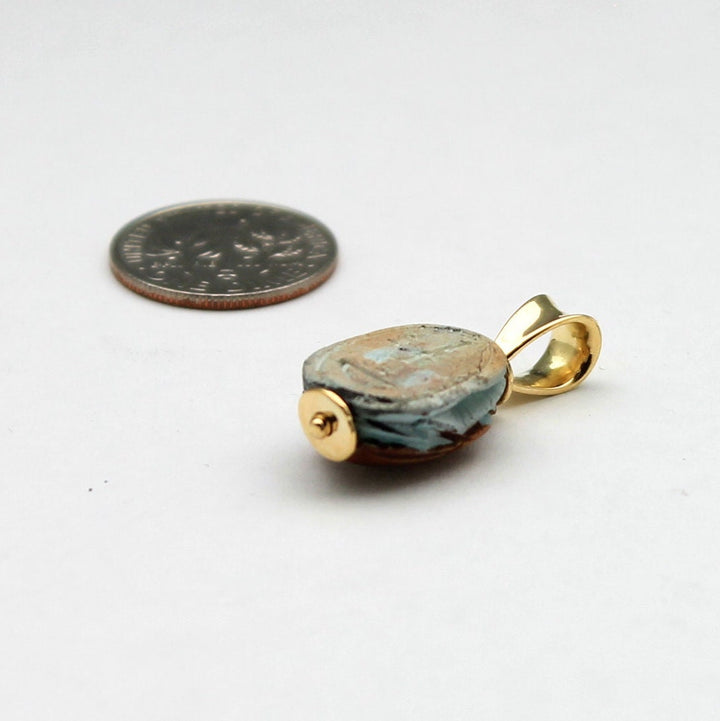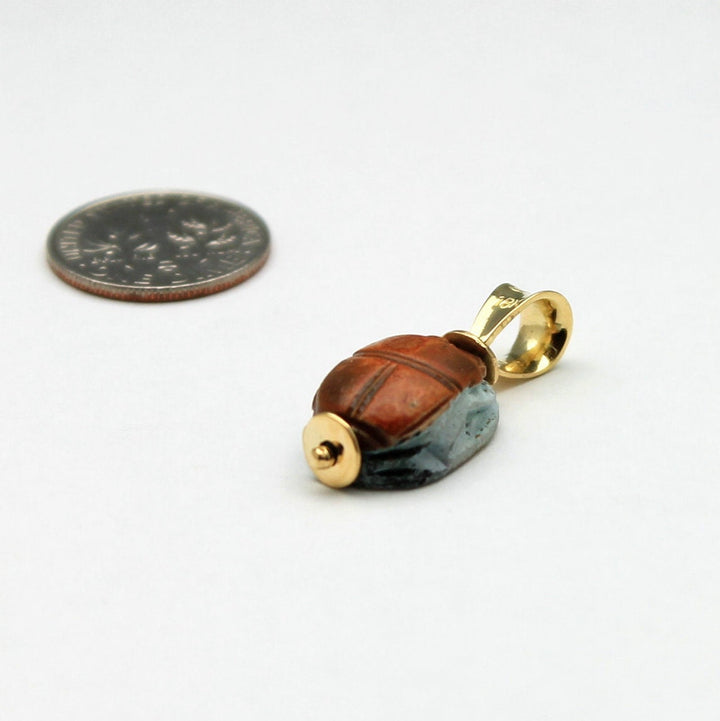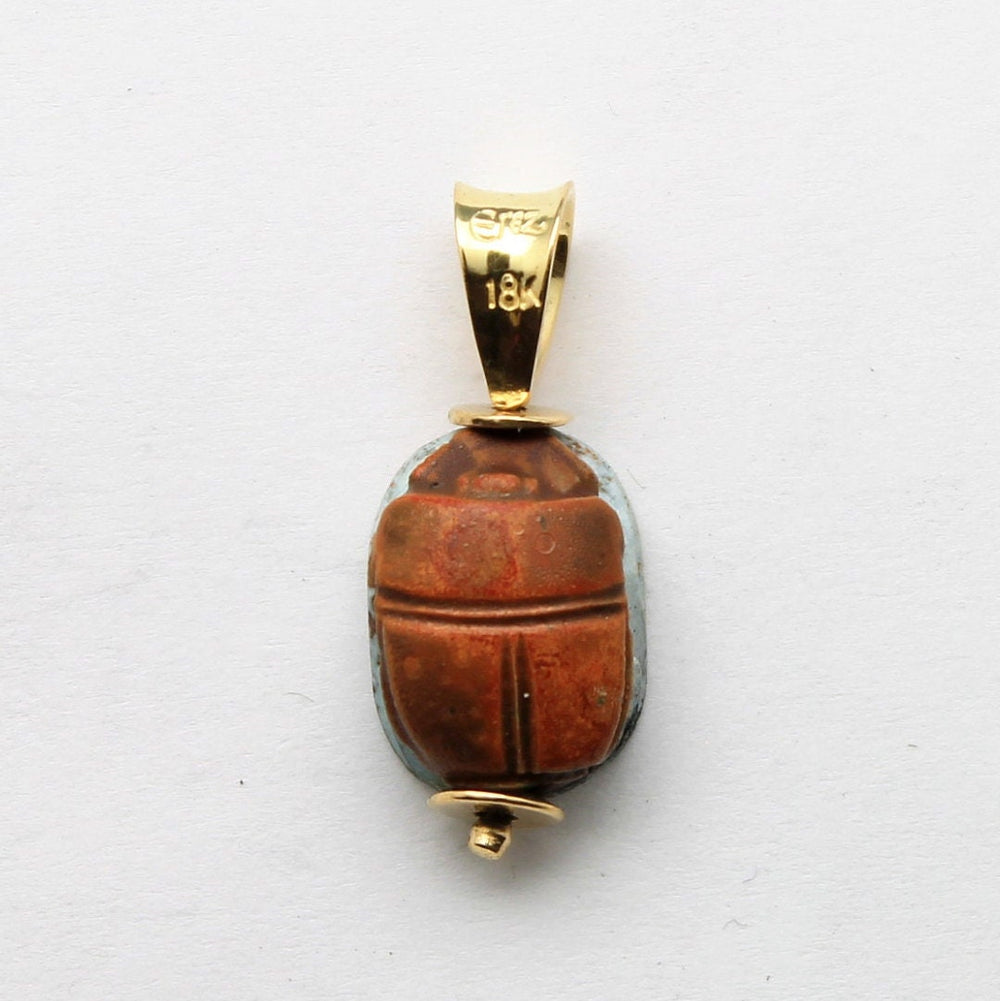18K Gold, Egyptian Scarab Pendant, Genuine Artifact, ID13853
- In stock, ready to ship
- Inventory on the way
History:
Partially finished, this bead is a peek into the ancient process of making scarab seals. Basic oval shape with central hole, and the beginnings of a stylized goat or antelope on the reverse of the pendant. Made during the Second Intermediate Period, the piece would have been set onto a similar flip ring or on a simple leather cord had it been finished. It will come with a certificate of authenticity. Let me know what size you'd like me to fit it to upon purchase.
These ancient Scarab pendants were from the late phase of Ancient Egypt. Used primarily as personal and administrative seals, they each bear a unique series of hieroglyphs. The Scarabs were carved from stone, or occasionally molded from Egyptian faience, glazed blue or green, then fired in a kiln. The soft steatite stone would mature at the high temperature into a harder stone compound by the name of enstatite. The style of the beetle varies from piece to piece, ranging from highly realistic naturalism to symbolic oval in shape. Generally the head, wing case, and legs are carved to visually describe the scarab beetle, with a flat base where the inscription is etched.
While originally green or blue, time has worn most of the specimens to the pale brown and white color of the stone, while the remnants of the ancient glaze accent the details. These beautiful ancient pendants were frequently worn on a simple cord around the neck of a high standing merchant or royal, or on a gold flip ring. The style of ring that this specimen has been mounted is designed after it's possible ancient mount. The flip mechanism would allow the owner to press the inscription into a lump of clay to seal important documents, while showing off the delicate design of the beetle while not in practical use.
The name of the beetle headed god Khepri ḫprj is derived from Egyptian language verb ḫpr, meaning "develop", "come into being", or "create". The god was connected with the scarab beetle (ḫprr in Egyptian), because the scarab rolls balls of dung across the ground, an act that the Egyptians saw as a symbol of the forces that move the sun across the sky. Khepri was thus a solar deity. Young dung beetles, having been laid as eggs within the dung ball, emerge from it fully formed. Therefore, Khepri also represented creation and rebirth, and he was specifically connected with the rising sun and the mythical creation of the world. Often, Khepri and another solar deity, Atum, were seen as aspects of Ra: Khepri was the morning sun, Ra was the midday sun, and Atum was the sun in the evening.




